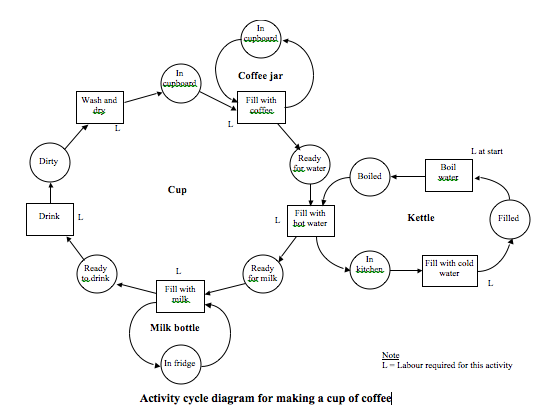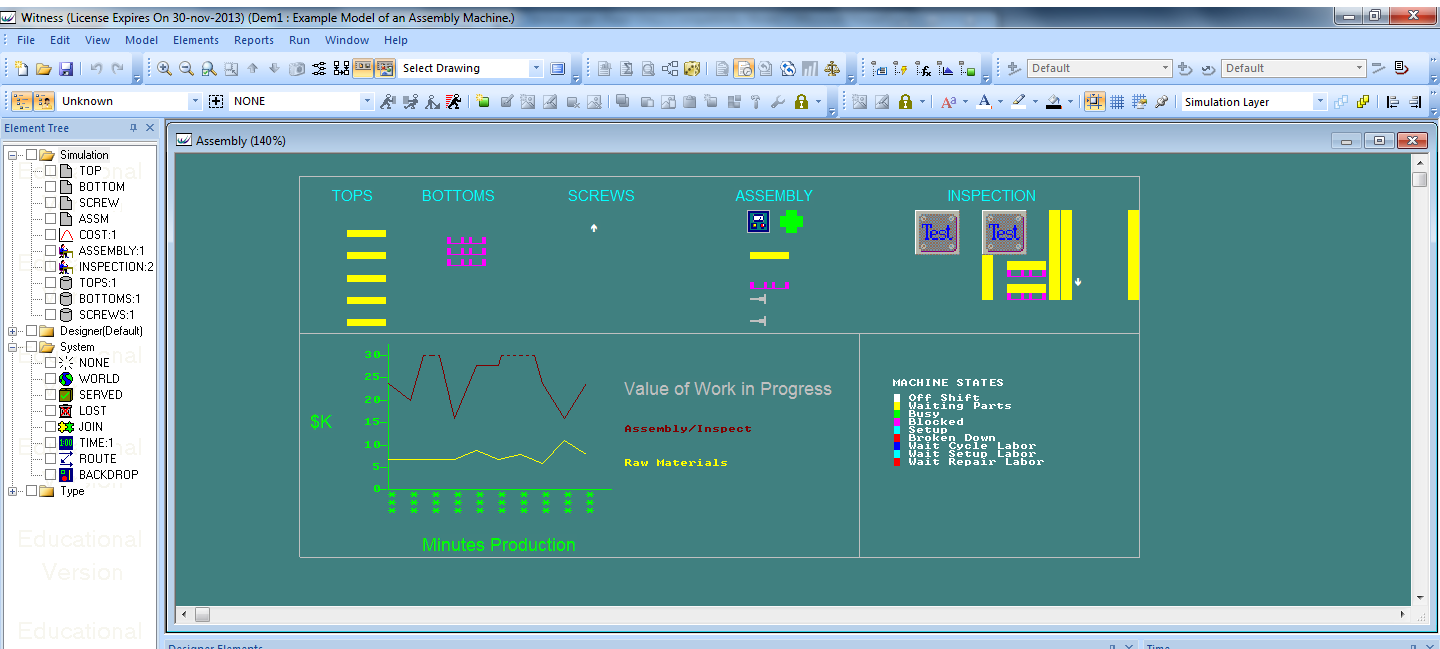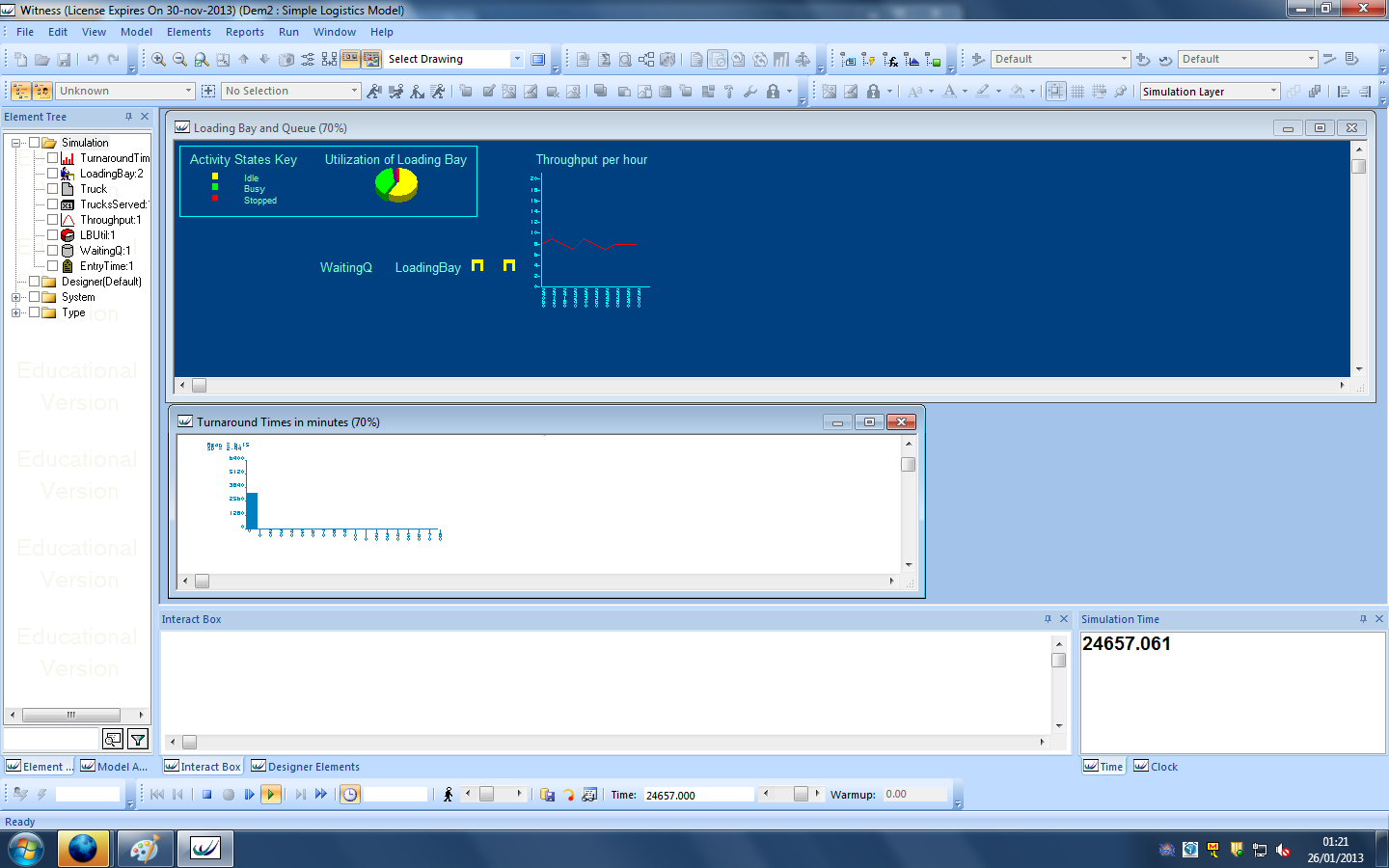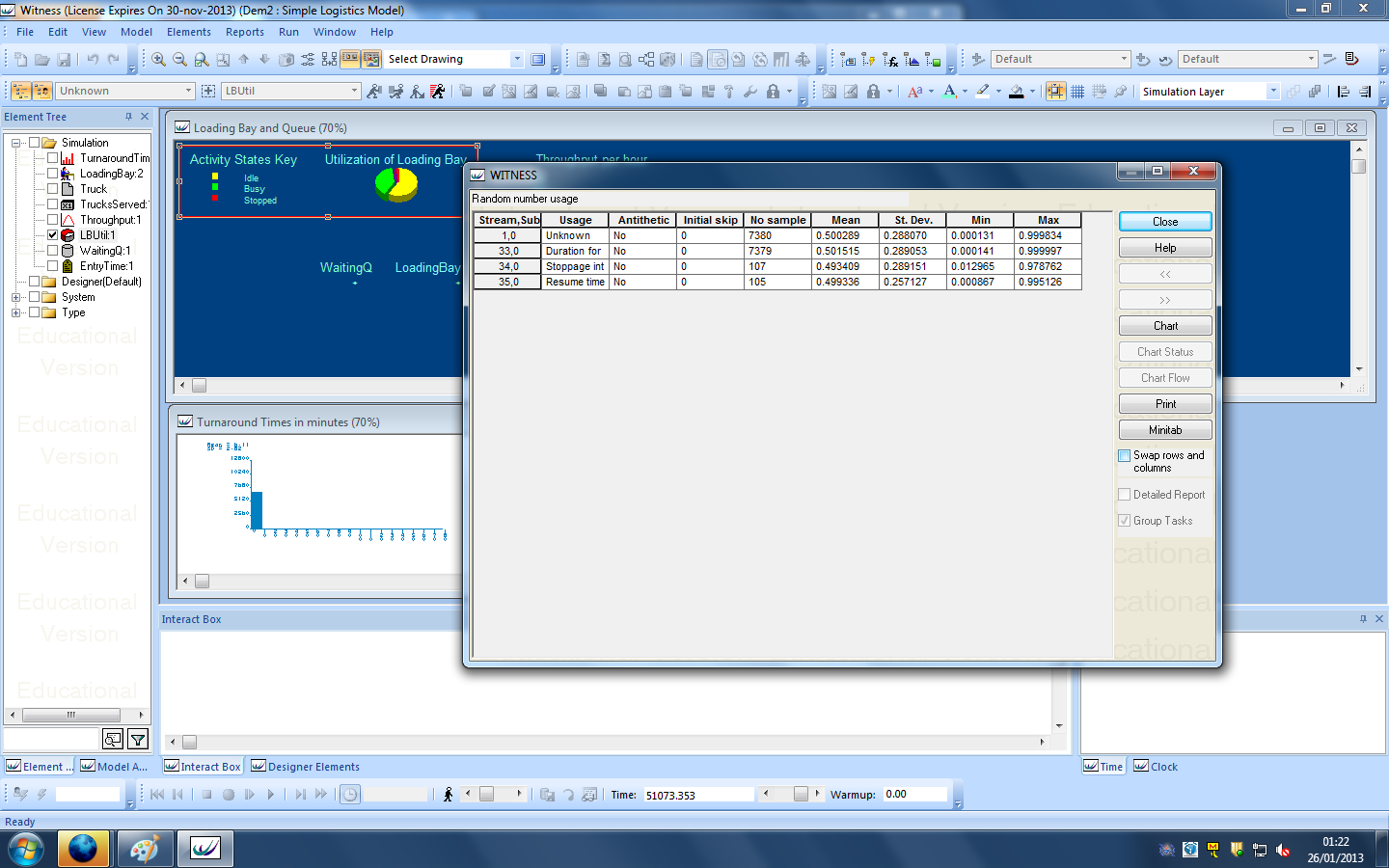Business Modeling and IT Simulation with Witness 12
Little bit about witness
Hi,% username%. In recent years, the growing trend of business modeling and simulation of business processes has found wide application in the Western market. In today's article, I want to talk about Witness 12 software - the brainchild of Lanner, which began its activities in the distant 1978. Being formed as a department of little-known to us British Leyland Motors (in the future, AT & T), the company has grown into the largest organization offering operational tracking, business simulation and optimization. Today in the list of clients and users of Witness there are such representatives of production activities as:
- Nissan
- Ford
- British airways
- HP
- Honda
- BP
- Gazprom
- etc

How does it work?
Let's dive for a second into the essence of the simulation.
- Simulation, like any other process, consists of components
- Creates a visual perception of the "picture" of the business
- Opportunities to experiment with the model
- Extensive opportunities for use in various industries and service areas
Witness uses simplified models that can recreate basic business processes. The system is capable of reproducing various situations involving statistical models — a one-time situation with the inability to determine the outcome, and dynamic models capable of changing as time passes. While linear programming is able to work only with deterministic types of simulation, where there is no changeability, Witness is able to work with stochastic types — changeable modeling using random numbers (often using random tables), which allows you to look at the process from all angles.
So, what is simulation and what is it eaten with? As I managed to mention earlier, any process is divided into components (the so-called entities), which change their state (state) by passing a unit of time.

- Entity - object being modeled
- State - the current state of the entity
- Event - instant action that changes the state of the system
This is how the simplest model of making coffee may look like (I apologize to readers who do not understand English, I will be ready to answer / translate all questions to email)

')
Turning to Witness, each entity, state and event have already prepared models (detailed up to different industries), which are arranged in an interconnected order, so that the condition is fulfilled. The created models can be reprogrammed in the future given time, location and priority.
Following further, I offer you some ready-made models created for different branches of business.

Here is an example of a hospital with the organization and control of incoming patients. Thus, it is clear how much time it takes to wait, and how much to work.
Opening the operations view for the next model (assembly of components at the factory), you can see which parts of the production process were occupied, and if you go deeper, you can analyze how long.


Moving to the next example, Witness will calculate the average value, standard deviation, as well as the minimum and maximum values, which allow you to quickly and easily analyze the success of a particular process.


And of course, most importantly, you can analyze the financial performance of the model, taking into account the specified parameters.

Summing up, I would like to focus your attention on the advantages of this software. First of all, obviously, the system significantly reduces costs and time for the implementation of a complete project. Being controlled, you can analyze various possible situations in a safe and secure place without putting your or someone else’s life in danger. (if the project is dangerous) And finally, using this modeling method, much less resources are used than in any other case.
In this post I tried to describe the main features and benefits of business modeling with Witness. If the habrosoobshchestvo shows interest to this topic, I will be glad to write a series of posts with more detailed examples and opportunities of implementation of this product.
Manufacturer Website: Lanner
Source: https://habr.com/ru/post/167313/
All Articles